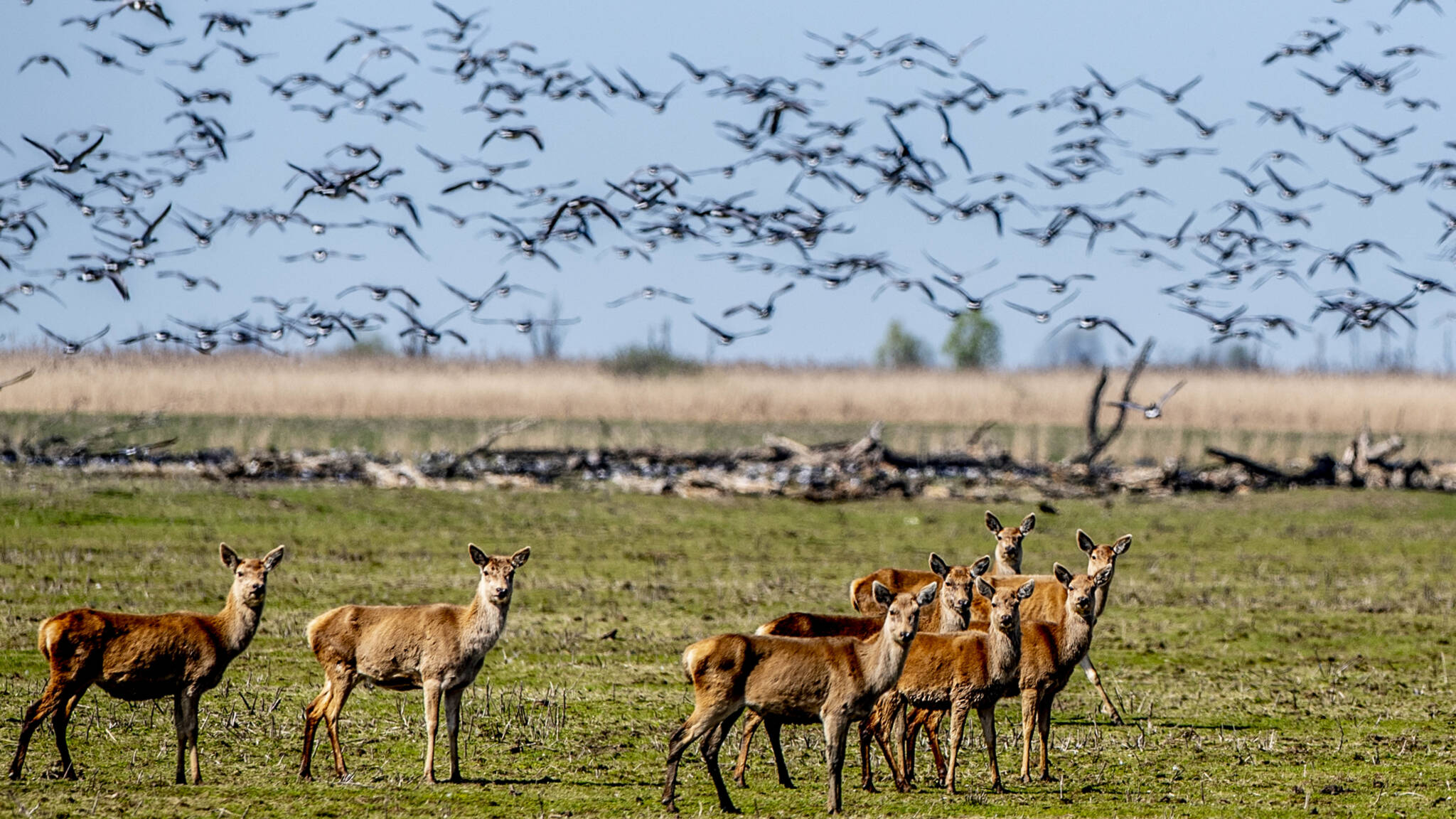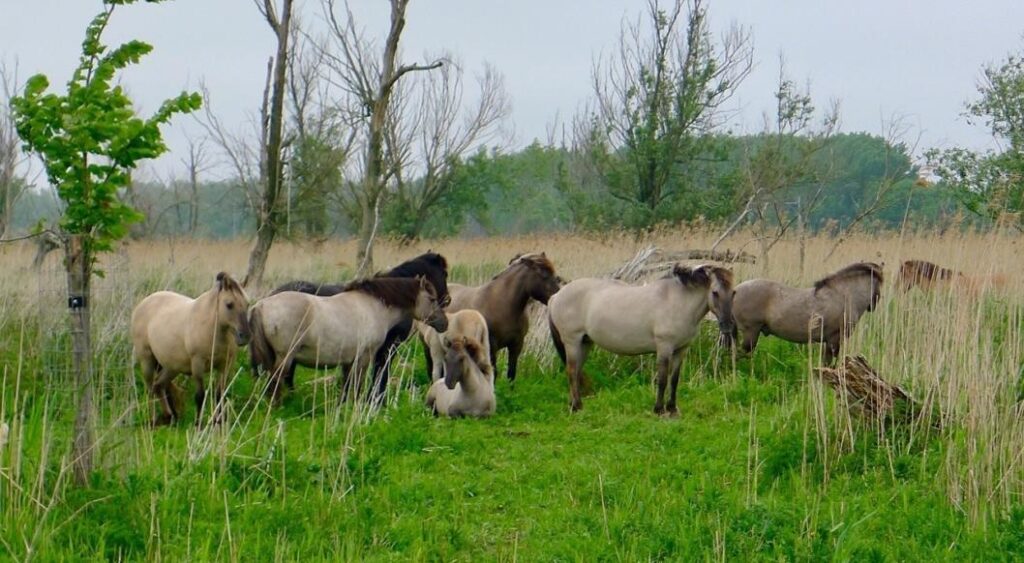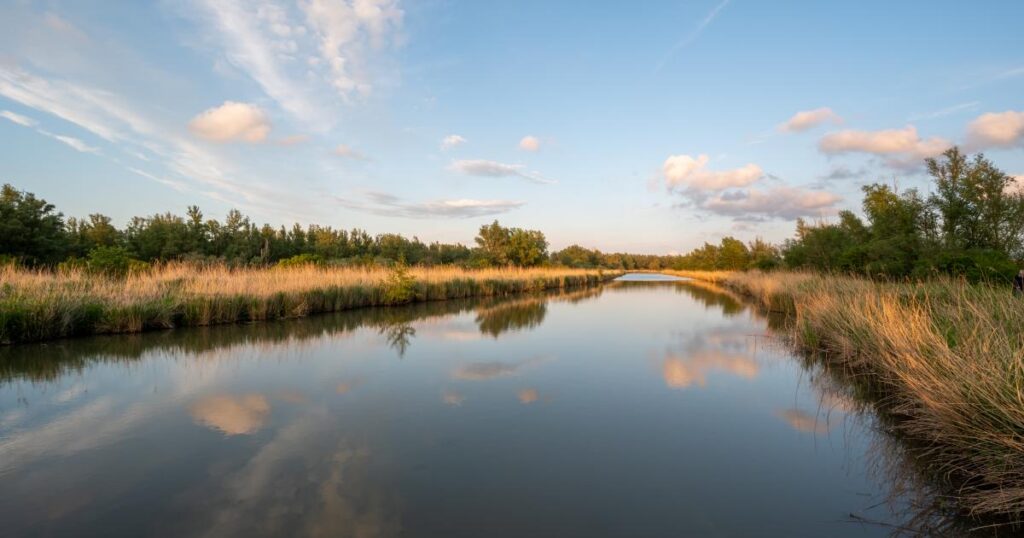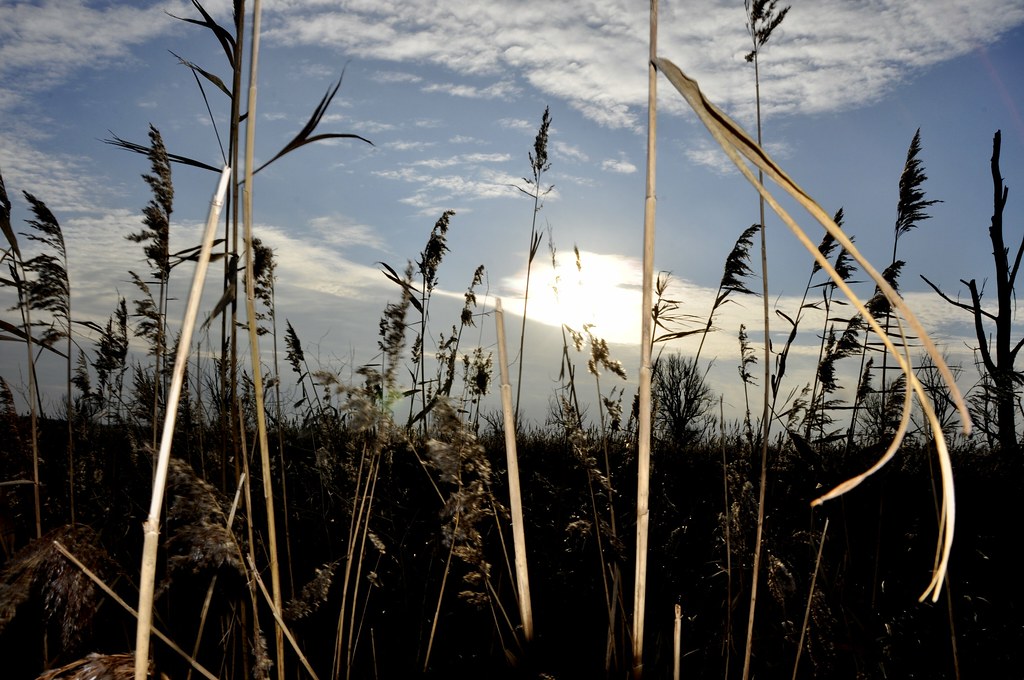The Oostvaardersplassen is a nature reserve in the Netherlands, which is managed by the State Forestry Service. Covering about 56 square kilometres (22 sq mi), it is noted as an experiment of rewilding. It is in a polder which was created in 1968; by 1989, its ecological interest had resulted in its being declared a Ramsar wetland. It became part of Nieuw Land National Park when it was created in 2018.
The governing body is the Province of Flevoland and the management lies with Staatsbosbeheer.
Geography
The Oostvaardersplassen are located in the municipality of Lelystad, between the towns of Lelystad and Almere, in the province of Flevoland in the Netherlands. The area of 56 square kilometres (22 sq mi) is situated on the shore of the Markermeer in the center of the Flevopolder. The Oostvaardersplassen can be divided into a wet area in the northwest and a dry area in the southeast.
Wet and dry areas
In the wet area along the Markermeer, there are large reedbeds on clay, where moulting geese often feed. This area is also home to great cormorant, common spoonbill, great egret, white-tailed eagle and Eurasian bittern, among many other animals. Oostvaardersplassen is a Special Protection Area for birdlife.
Before the establishment of the reserve, the dry area was a nursery for willow trees, and in the first year hundreds of seedlings could be found on each square metre. This led to concern that a dense woodland would develop, significantly reducing the value of the habitat for water birds. To avoid this, the park’s managers brought in a number of large herbivores to keep the area more open, including Konik ponies, red deer and Heck cattle. These large grazing animals are kept out in the open all year round with supplemental feeding for the winter and early spring, and are allowed to behave as wild animals (without, for example, for now, castrating males). The ecosystem developing under their influence is thought to resemble those that would have existed on European river banks and deltas before human disturbance. However, there is some controversy about how natural the ecosystem is, as it lacks top predators.
Large herbivores
Before they were driven to extinction, large herbivores in this part of Europe included the tarpan (wild horse), wisent (European bison), red deer (elk or wapiti in North America) and aurochs (wild cattle). The tarpan and aurochs are extinct, but Konik ponies and Heck cattle are able to act as functional equivalents, occupying a similar ecological niche. The only native large herbivores now missing from Oostvaardersplassen are the European Moose, the wild boar and the wisent. There is a chance that the wild boar will find its way naturally from the Veluwe.




